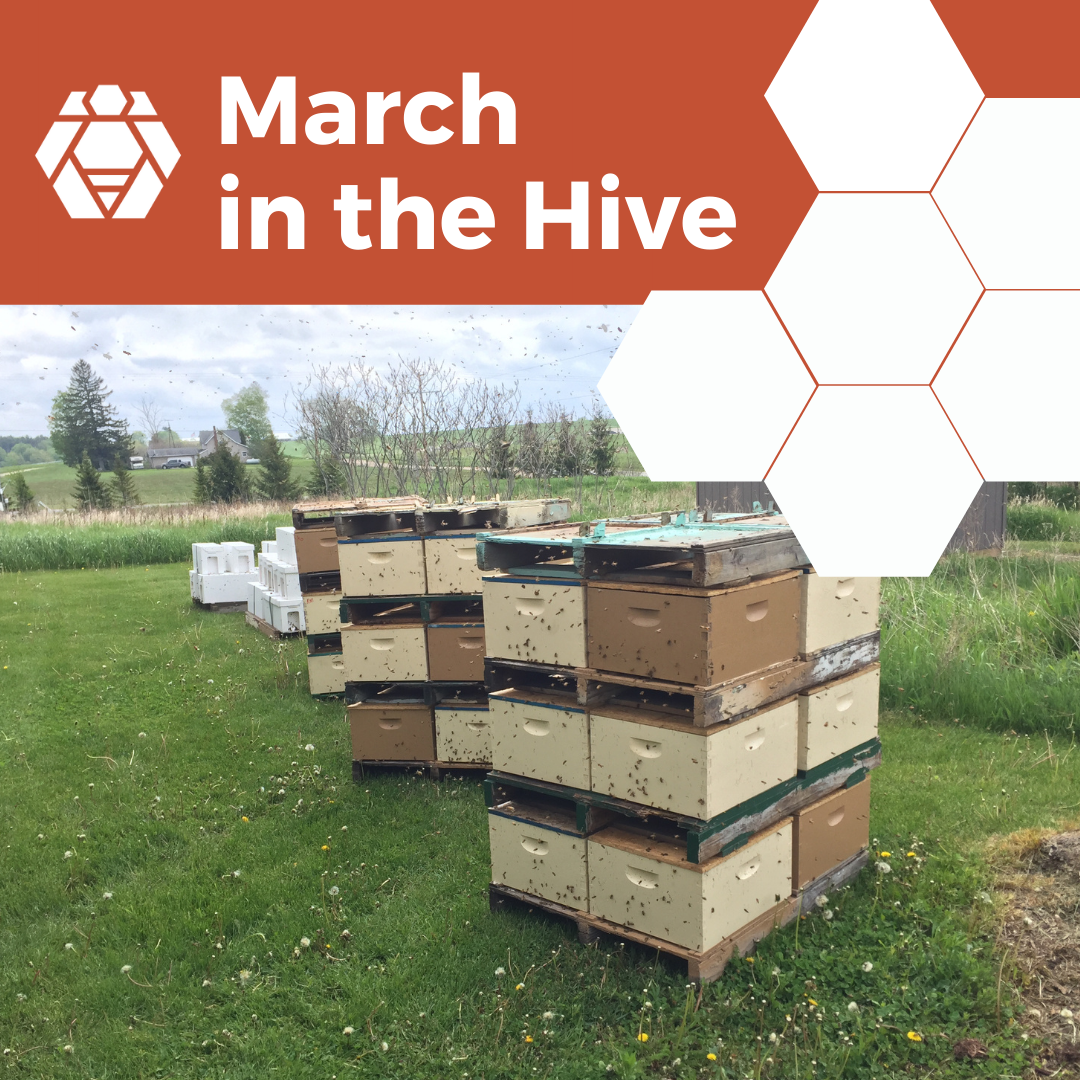
Are you getting into bees and confused by all of the hubbub about queens or “breeds” of bees? Well, it is easy to say it doesn’t matter and bees are bees. But that doesn’t really answer the question. One thing we need to remember is that when someone is selling Italian bees, Carniolan Bees, or Russian bees, they are selling bees based on traits and characteristics more than genetics. These traits have been selected for years in breeding programs to accentuate characteristics found in the namesake populations. Much like cultivar groups of brussels sprouts, broccoli, cabbage, collard greens, kale, and kohlrabi are the same species of cruciferous, but express different traits due to selective breeding.
When someone is selling Italian queens or bees, they are selling bees that tend to develop large clusters. With the large clusters, Italians tend to produce ample honey crops. Also, they are fairly gentle bees that show little aggression toward the beekeepers’ missteps. The large clusters can be a blessing or a hindrance going into winter. Bees huddle together to keep warm in the winter, so more the merrier, right? Well, with all of those mouths to feed they need more resources in the cold winters and spring that follows. A well-stocked Italian hive will survive winter and spring, but if the pollen and nectar fail to materialize, Italians will burn through resources to be ready for an eventual flow. This can lead to starvation in a delayed spring if the beekeeper does not keep an eye on them. As far as physical traits, Italian bees tend to be blond in color with brown to black stripes. Italian queens tend to be blond to light orange/amber with occasional brown to black markings.
Carniolan queens and bees, on the other hand, winter in smaller clusters. This is great for conserving resources, but can lead to excessive die off in exceptionally cold winters. They do develop strong clusters in the spring, but unlike Italians they will pull back brood rearing if resources become scarce. Carniolan bees are one of the gentlest bee varieties you’ll find. The bees tend to be orange/amber to black with black stripes, while the queens range from a dark orange or brown to black.
The last common variety of honey bee is the Russian. Russians are an interesting mix. They winter with good sized clusters and produce good honey crops. They have been shown to carry lighter mite loads and have lower tolerance for mite presents. So, what is the downside to Russian bees? Well, they are a bit more aggressive than Italians or Carniolans, and tend to swarm more. Some will say that more aggressive bees will produce more honey, but in our experience aggression does not correlate to honey production. The tendency to swarm helps with mites by introducing brood breaks. The coloring of Russian bees would fall about in the middle of Italians and Carniolans, while the Russian queens tend to be blond to orange/amber in color and often have brown to black stripes.
Finally, you may have heard of bee brands like Beeweaver, Saskatraz, and Ankle Biters. These brands have meticulously bred bees to focus on traits the breeder finds attractive. Each and every brand will tell you in detail what they focus on, but in general they focus on mite resistance, gentleness, and honey production. You may come across Varroa Sensitive Hygiene (VSH) and VSH stock is the fruit of breeding programs that select breeding stock based on the tests that evaluate hygienic behavior. Hygienic behavior for bees is seen in uncapping, recapping, and removal behavior of brood that is not “normal” or healthy. This behavior translates to fewer mites in the hive and a less hospitable environment for mites to reproduce.
Where does this leave you for selecting the type of bees? Personally, we recommend new beekeepers start off with Carniolans or Italians. This is because of their gentleness and they are a bit more forgiving of “newbees” mistakes. After several years, once the newbee has become a proficient beekeeper, then one might bring in stock with traits they want to introduce into their apiary.



